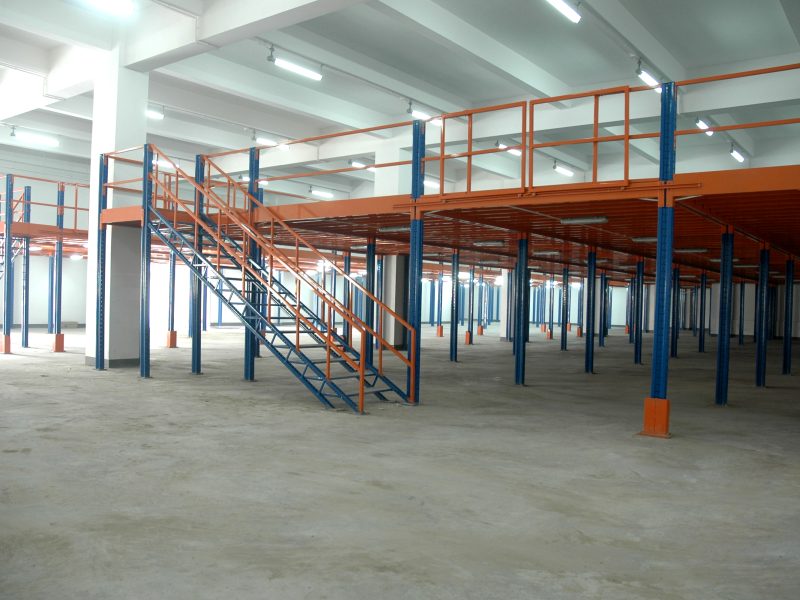
Mezzanine flooring is an separate floor addition within a building, designed to create extra usable space without qualifying as an official floor. This versatile solution maximizes vertical space, making it ideal for warehouses, offices, or residential areas in need of additional work or living spaces. Constructed from materials like metal, wood, or concrete, mezzanine floors offer flexibility in design and can be customized to meet specific requirements. Not only do they expand the usable area, but they also enhance spatial layout and visual appeal, offering a practical and aesthetic upgrade to any interior.
What is mezzanine flooring made from?
Mezzanine flooring is typically made from a variety of materials, including steel, aluminum, wood, and reinforced concrete. Steel is a popular choice for its strength and durability, often used in industrial and commercial settings. Aluminum offers a lighter option with good durability, suitable for environments requiring easy modification. Wood adds a natural aesthetic and is used in residential or office spaces for a warmer look. Reinforced concrete provides a solid, fire-resistant option, ideal for heavy-duty applications. The choice of material depends on the intended use, load requirements, and desired appearance, allowing for a versatile and customizable flooring solution.
The Benefits of mezzanine flooring
Firstly, it’s a space-saver’s dream, effectively doubling or tripling available floor space without the need for an extensive renovation or moving to a new location. This extra space can serve various purposes, from additional storage and offices to production areas, depending on your needs.
Secondly, mezzanine floors are highly versatile and customizable. They can be tailored in terms of size, design, and material to fit specific requirements, ensuring a perfect match for your existing space. Economically, they offer a significant advantage by providing additional space at a fraction of the cost of moving or building expansions. Aesthetically, they can enhance the look and feel of your environment, contributing to a more pleasant and efficient workspace. Plus, their installation is relatively quick and causes minimal disruption, allowing businesses to continue operations with little to no downtime.
In essence, mezzanine flooring is a practical, cost-effective, and aesthetically pleasing solution for maximizing space and functionality.
What is the Mezzanine Used for?
In industrial settings, they’re often utilized to create extra storage space for inventory or equipment, maximizing the use of vertical space in warehouses. In the retail world, mezzanine levels can provide additional display areas or storage, enhancing the shopping experience without expanding the physical footprint of the store. Offices benefit from mezzanine floors by gaining extra workspaces, meeting rooms, or break areas, facilitating better use of the building’s total area. Additionally, in residential properties, mezzanine levels can add a unique architectural feature, offering extra living spaces such as bedrooms, home offices, or lounges. Their adaptability to different needs and environments, coupled with the ability to customize their design, makes mezzanine floors a smart solution for expanding usable space without the complexities of full-scale construction projects.
Types of mezzanine floors
Free-standing Mezzanine: These are independent structures that can be installed within an existing building. They are highly versatile and can be relocated or modified as needs change. Free-standing mezzanines are ideal for adding extra storage, workspace, or office areas.
Rack-supported Mezzanine: This type integrates with pallet racking to create an additional floor level above the racks. It’s particularly useful in warehouses for maximizing storage space. The shelving system supports the mezzanine floor, making it a cost-effective solution for inventory management.
Shelf-supported Mezzanine: Similar to rack-supported mezzanines, these are supported by shelving units rather than pallet racks. They are perfect for smaller items and can enhance organization and accessibility in retail or warehouse settings.
Structural Mezzanine: Built as part of the building structure, these mezzanines are designed for heavy-duty use. They can support substantial weight, making them suitable for industrial applications, manufacturing plants, and areas requiring durable flooring for heavy machinery or equipment.
Office Mezzanine: Specifically designed to create office space, these mezzanines often feature enhanced aesthetics, including stylish railings and staircases. They provide a cost-effective way to expand office areas without extending the building’s footprint.
Each type of mezzanine flooring offers unique benefits, allowing businesses and homeowners to choose the best option based on their specific needs, whether it’s for storage, workspace, or enhancing the functionality of a space.
Looking For a Warehouse Racking Supplier For Your Projects?
Golden Racking is a leading racking manufacturer in China. We provide a one-stop solution for warehouse storage racking and warehouse mezzanine projects. Ask for a quote now!
